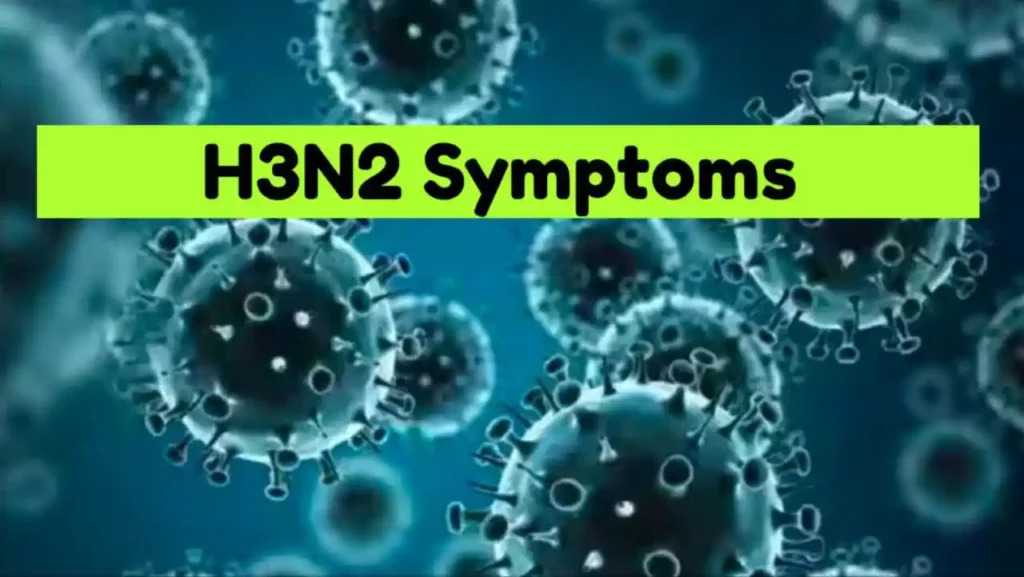H3N2 Influenza Outbreak in India: Stay Informed with Symptoms, Precautions, and Treatment Options.
The H3N2 virus, a severe strain of the influenza A virus that is not as contagious as the lethal H1N1 virus, is to blame for the majority of these cases (swine flu).

H3N2 Influenza Outbreak in India: Stay Informed with Symptoms, Precautions, and Treatment Options
Highlights:
- There have been incidences of the H3N2 virus recorded in North India.
- You can take care of yourself by getting vaccinated and cleaning your environment.
- Long-lasting coughing, runny nose, and sore throat are the symptoms.
An increase in H3N2 influenza cases is currently being seen in India. This particular flu virus type is well known for producing severe symptoms, some of which can be fatal. To properly tackle this flu, it is crucial to grasp the symptoms, safety measures, and therapies.
Every two people experience a protracted post-viral cough, shortness of breath, and sneezing. This pattern is unusual, particularly in North India, where there have been more flu cases reported in January, February, and March.
Dr Sandeep Budhiraja, Group Medical Director, Max Healthcare & Senior Director, Institute of Internal Medicine, claims that this year’s flu season’s influenza virus strain’s symptoms are a little bit different and a little bit more severe than they were in years past.
“Many patients are complaining of chronic coughs or coughing fits that continue for days or even weeks after the virus has subsided. In North India, February and March are often months when there aren’t any flu cases. We have received several cases up to this point. In most nations, seasonality has increased, according to Dr Sandeep Budhiraja.
The H3N2 virus, a severe strain of the influenza A virus that is not as contagious as the lethal H1N1 virus, is to blame for the majority of these cases (swine flu).
H3N2 VIRUS: WHAT IS IT?
The H3N2 virus belongs to the influenza A virus subclass. Each year, illnesses are brought on by a viral infection of the respiratory system. In 1968, researchers found this strain of influenza A virus in people.
Hemagglutinin (HA) and neuraminidase, two types of protein strains of the influenza A virus, are the source of the virus (NA). HA has over 18 distinct subtypes, each denoted by the numbers H1–H18, while NA has 11 different subtypes, each represented by the numbers N1–N11. The influenza A virus’s two protein strains are combined to form the H3N2.
WHAT ARE THE SYMPTOMS OF THE H3N2 VIRUS?

The symptoms of H3N2 flu are similar to other strains of the flu virus. However, the symptoms can be more severe and longer-lasting, making them more challenging to manage.
The most common symptoms of H3N2 flu include the following:
- High fever
- Body aches and headaches
- Sore throat
- Coughing and sneezing
- Fatigue and weakness
- In severe cases, H3N2 flu can cause complications such as pneumonia and bronchitis, which can be life-threatening.
WHAT ARE THE PRECAUTIONS YOU SHOULD TAKE TO AVOID H3N2 VIRUS?
You can take several preventative measures to safeguard yourself from the H3N2 flu, including:
- Getting vaccinated:
Getting a flu vaccine every year is the best method to prevent the flu.
-
Washing your hands regularly:
Frequent hand washing can help reduce the spread of germs.
-
Avoiding close contact with sick people:
Stay away from people who are sick, and if you’re sick, stay home to prevent the spreading of the virus.
-
Covering your nose and mouth:
Use a tissue or your elbow to shield your nose and mouth from germs when you cough or sneeze.
-
Sanitising and disinfecting surfaces and items that are regularly touched:
Germs can live on surfaces for hours, so it’s essential to keep them clean and disinfected.
WHAT IS THE TREATMENT FOR H3N2 VIRUS?

If you suspect you have H3N2 flu, seek medical attention immediately. Your doctor can recommend antiviral drugs to help you manage the intensity of your symptoms and avoid complications.
Other treatment options include:
- Getting plenty of rest:
Resting helps your body fight the virus and allows it to recover faster.
-
Drinking fluids:
Staying hydrated can help prevent complications and reduce the severity of your symptoms.
-
Using over-the-counter medications:
Certain H3N2 flu symptoms can be reduced with the aid of painkillers and fever reducers.
Annual flu shots for the influenza virus should be administered and taken around this time. If symptoms are severe, visiting a doctor is advisable.
How is H3N2 influenza different from COVID-19?
The viruses that cause COVID-19 and H3N2 influenza are both spreadable. They have the ability to modify as well as disseminate via droplets dramatically. Yet, even though both these respiratory infections are highly transmissible, they both belong to a separate family of viruses.
H3N2 is a strain of the influenza infectious virus that is currently plaguing people, whereas the SARs-CoV-2 virus brings on COVID-19. According to reports, the latter can result in more hospitalisations compared to other strains.
H3N2 influenza vs. COVID-19
A significant source of worry is India’s dramatic increase in cold and flu illnesses. Scientists from the Indian Council of Medical Research have linked these cases of fever and a prolonged cough to influenza A subtype H3N2.
Seasonal flu strains A, B, C, and D are frequently distinguished from one another. According to the World Health Organization, seasonal epidemics of sickness are brought on by the spread of influenza A and B viruses (WHO).
As H3N2 influenza spreads and more people experience symptoms, including coughing, sneezing, and vomiting, the ICMR has warned against the careless use of antibiotics.
The research centre advises using soap and water to wash one’s hands, donning a mask, staying away from busy areas, covering one’s mouth and nose while coughing and sneezing, not touching one’s eyes or nose, getting lots of fluids, and taking paracetamol for fever and body aches.
What makes the H3N2 influenza so distinctive?

Most influenza patients so far have had upper respiratory tract symptoms. This includes symptoms such as a dry cough, headache, fever, sore throat, and runny nose. Yet there has been a persistent cough that just won’t go away.
Seasonal fever will remain for five to seven days, according to the Indian Medical Association (IMA), but the cough may linger for as long as three weeks in certain people.
Keep in mind the incubation period.
The incubation period is the length of time between first coming into touch with the virus and the onset of symptoms. According to some reports, the SARs-CoV-2 virus can cause disease 2 to 14 days after infection, depending on the individual.
The incubation period for seasonal influenza may be substantially shorter than the incubation period for COVID. About 1-4 days pass from infection to sickness.
How to tell if you have the flu or COVID?
The only guaranteed method to determine if you have the flu or COVID is to get tested for it. You can choose between an RT PCR test, which is more accurate but takes longer to produce results, and a rapid antigen test, which delivers data more quickly. The influenza virus can only be detected using a respiratory sample, like a nasal swab, in flu and COVID testing.
H3N2 influenza is a severe flu virus that is currently affecting India. Understanding the signs, safety measures to take, and remedies can help you and your loved ones avoid contracting this harmful illness. Stay safe and healthy by taking necessary precautions and seeking medical attention if you suspect you have H3N2 flu.
edited and proofread by nikita sharma




